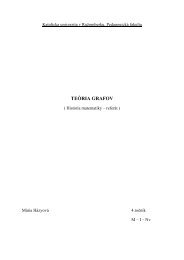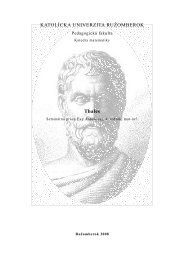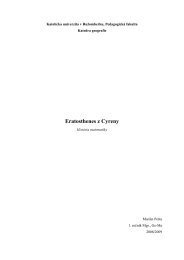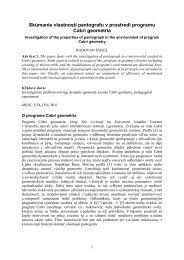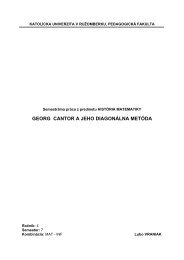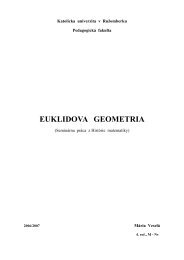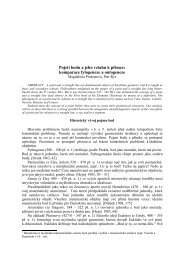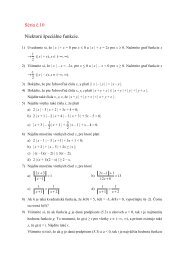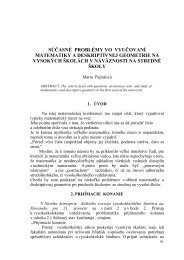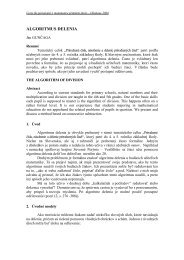Katedra matematiky - Katolícka univerzita v Ružomberku
Katedra matematiky - Katolícka univerzita v Ružomberku
Katedra matematiky - Katolícka univerzita v Ružomberku
- No tags were found...
Create successful ePaper yourself
Turn your PDF publications into a flip-book with our unique Google optimized e-Paper software.
Language Aspects of the Initial Phase of the CLIL Method ... 169their mathematics teacher did not notice significant changes in the pupils’behaviour. The language background of the CLIL method inmplemented inmathematics lessons could be described from several point of view. Formthe grammatical point of view, the teaching consisted of basic grammaticalelements and was adequate to the pupils level of English.The mathematical vocabulary numbered 24 new specialised words inthe presented topic which were well acquired by the pupils. The teacherexperimentermanaged to cover the mathematical topic using the targetlanguage in 76 percent of all utterances – either only in English or togetherwith the same Czech translation. It represents a large cover of the presentedtopic in the target language. Teachers’ worries about the implementation ofthe CLIL method in lessons of mathematics can be seen as odd. The conductedresearch showed it is possible to implement successfully the CLILmethod within the given time allocation devoted to mathematics at particulareducational levels without increasing the number of lessons.Concerning the language level, the target language used by the experimenterat the lower secondary level corresponds with the language referencelevel of B1 and the level of the pupil was at level A1. Teachers should notbe afraid to switch between the mother tongue and the target languages. Inthe initial phase of the implementation it is unavoidable. The analysis of thefunctionality of the code-switching of the experimenter concluded that thefunctions formulated by Sert (2005) and Cook (1991) are rather insufficientand that the code-switching have also other functions. The experimenterswitched the code when asking for comprehension, explaining the contextsuch as history, or for summarizing what has been explained in the targetlanguage.However, even though the code-switching is used for several reasons, itis still possible to cover a significant part of lessons of mathematics in thetarget language and meet the criterion for CLIL teaching. Teachers shouldconsider code-switching as a helpful tool.The experimenter tried to get the pupils involved in the process posingsimple questions asking them to answer in the target language. Thequestions were primarily focused on:• the reading of numbers (How do we read this number?, How manyintersections do we have?, How do we read 62+82 = 102 ?),• the English alphabet (e.g. What is the name of the triangle?, Whichside of the triangle is the hypothenuse?, Which triangle is rightangled?),




